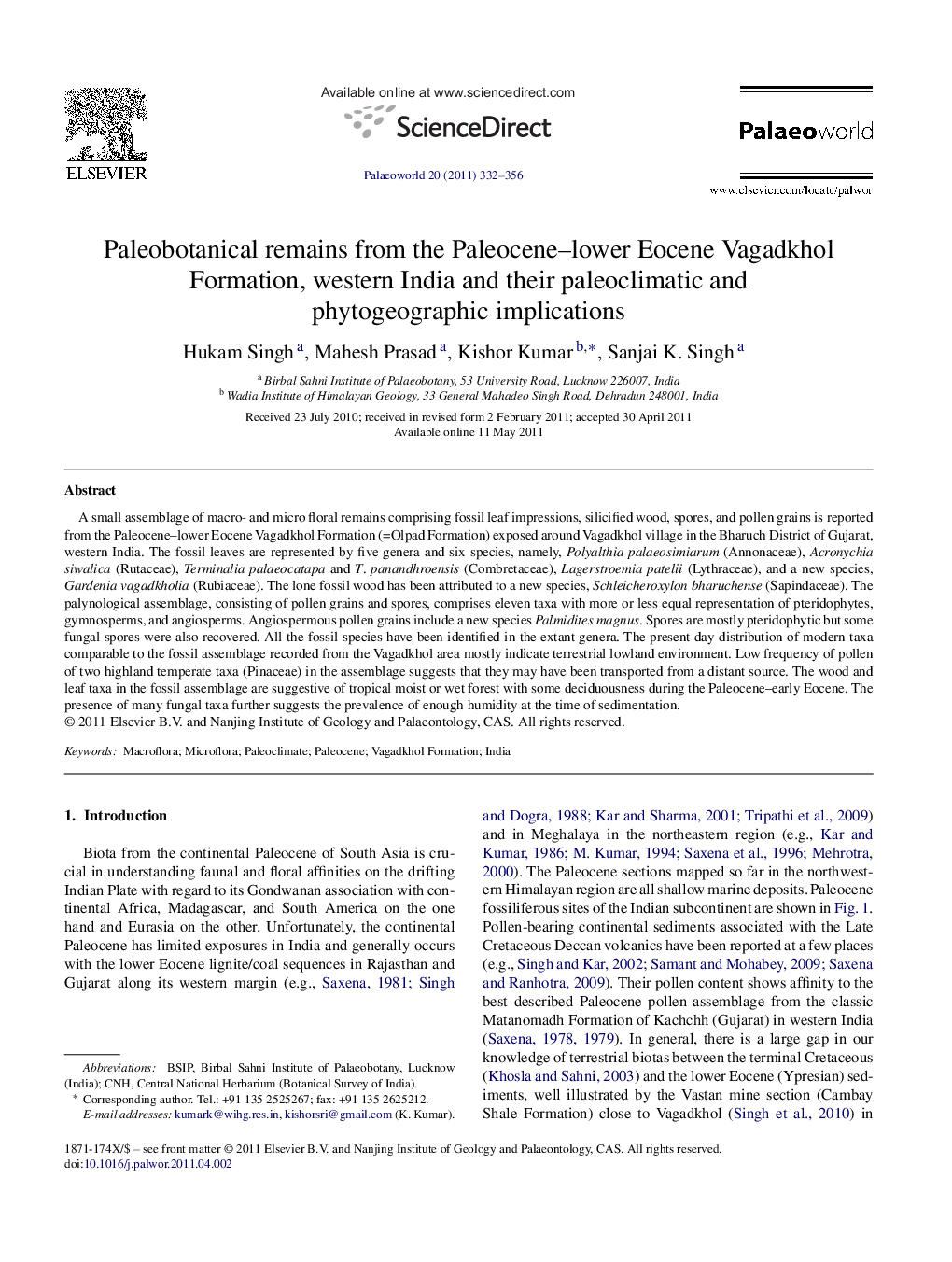| کد مقاله | کد نشریه | سال انتشار | مقاله انگلیسی | نسخه تمام متن |
|---|---|---|---|---|
| 4749790 | 1642280 | 2011 | 25 صفحه PDF | دانلود رایگان |

A small assemblage of macro- and micro floral remains comprising fossil leaf impressions, silicified wood, spores, and pollen grains is reported from the Paleocene–lower Eocene Vagadkhol Formation (=Olpad Formation) exposed around Vagadkhol village in the Bharuch District of Gujarat, western India. The fossil leaves are represented by five genera and six species, namely, Polyalthia palaeosimiarum (Annonaceae), Acronychia siwalica (Rutaceae), Terminalia palaeocatapa and T. panandhroensis (Combretaceae), Lagerstroemia patelii (Lythraceae), and a new species, Gardenia vagadkholia (Rubiaceae). The lone fossil wood has been attributed to a new species, Schleicheroxylon bharuchense (Sapindaceae). The palynological assemblage, consisting of pollen grains and spores, comprises eleven taxa with more or less equal representation of pteridophytes, gymnosperms, and angiosperms. Angiospermous pollen grains include a new species Palmidites magnus. Spores are mostly pteridophytic but some fungal spores were also recovered. All the fossil species have been identified in the extant genera. The present day distribution of modern taxa comparable to the fossil assemblage recorded from the Vagadkhol area mostly indicate terrestrial lowland environment. Low frequency of pollen of two highland temperate taxa (Pinaceae) in the assemblage suggests that they may have been transported from a distant source. The wood and leaf taxa in the fossil assemblage are suggestive of tropical moist or wet forest with some deciduousness during the Paleocene–early Eocene. The presence of many fungal taxa further suggests the prevalence of enough humidity at the time of sedimentation.
Journal: Palaeoworld - Volume 20, Issue 4, December 2011, Pages 332–356